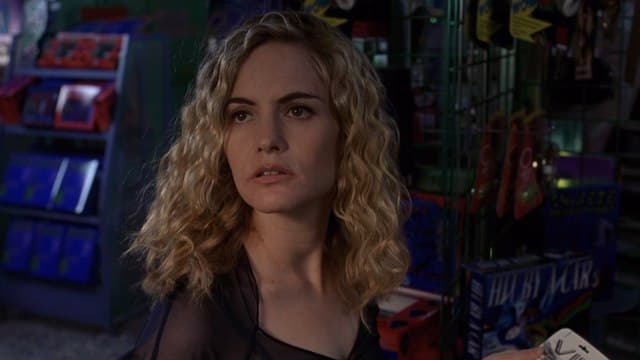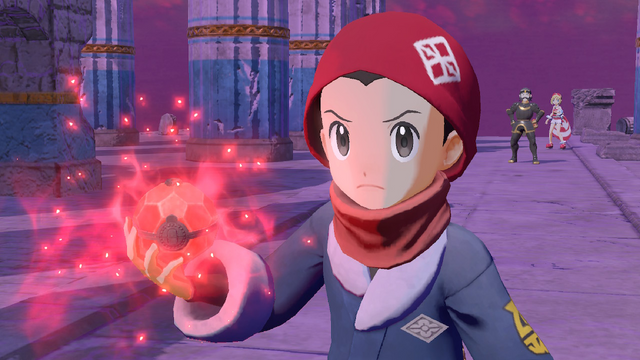The tension between the comfort of the familiar and the surprise of the unexpected is at the core of why watching wrestling is fun. Much of the time, the familiar comes in the form of the performers themselves and the roles they play— heels or faces, technical geniuses or athletic marvels, scrappy underdogs or Roman Reigns— and the unexpected is, of course, the match itself: Who will triumph, and how (and will a reverse hurricanrana be involved because that would be tight as hell)?
More Pro Wrestling:
- Gatoh Move’s Lulu Pencil is Important Freelance Writer Representation
- A Pilgrimage to Scott Steiner’s Shoney’s
- Sara Del Rey: An Evolutionary Figure in Women’s Wrestling
It’s rare to see a wrestler shatter the mold for what a gimmick can be. Even if a performer creates a persona that’s completely unique, they run the risk of being pigeonholed as a one-trick talent whose tenure within their promotion, if not their entire career, will last precisely as long as the bit can sustain it. Some (like Orange Cassidy) are more successful than others.
There are those rare gimmicks that both set a wrestler apart from their peers, enhance the quality of their in-ring work, and make even longtime fans of the sport take pause, like hey, I’ve never seen that before. I reached out to CHIKARA rookie and Young Lions Cup champion Still Life With Apricots and Pears because, hey, I’ve never seen a wrestler like them before.
Of course, I couldn’t just ask someone called The Masterpiece about their wrestling career alone, so included within the text of our Q&A are some still life paintings with Still Life’s expert commentary on their artistic merit. Feast your eyes:
[The below interview has been edited and condensed for clarity.]
Calvin Kalsulke: Let’s start with aesthetics: can you walk me through the evolution of your ring gear over the course of your run in CHIKARA thus far, and the intention and/or meaning behind it?
Still Life with Apricots and Pears: Still Life is and will always be a continuous work in progress. When I first debuted I was almost completely white, but as time went on, Blank would continue to add to the outfit. Sometimes this is a result of his frustration—other times it was meant as inspiration. However, I was tainted at National Pro Wrestling Day by Penelope Ford, this was the last time that Blank ran his bristles upon me.
CK: Can you talk a little bit about your relationship with Blank and how that’s impacted your choices both artistically and in the ring?
SL: Blank took me from a directionless Wrestle Factory Student and molded me into the competitor that I am today.

“This invokes the essence of a Windows 95 CD-ROM.”
CK: What drew you to wrestle in CHIKARA, specifically?
SL: I am friends with some of the folks behind Ignite Philly where CHIKARA and Wrestle Factory founder Mike Quackenbush gave his famous speech called the Art of Pro Wrestling.
Mike invited a few of us to attend a free workshop. I actually had no intention of becoming a professional wrestler, but I was always a fan. I never saw anyone who looked like me in a wrestling ring, so I never considered giving it a try. The workshop went well enough, and he invited us to sign up for a tiered 101 class. There were 16 people who started that class, and I was one of the five who passed. From there I decided to focus my life towards wrestling.
CK: Speaking of in-ring action: who do you look to for inspiration in terms of building your fighting style?
SL: One the biggest advantages to the Wrestle Factory is the wide variety of experience the trainers provide. This includes Mike Quackenbush, Fire Ant, Ophidian (before his recent transgressions), Hallowicked, John Francis of Coronado. As well as Drew Gulak and Chuck Taylor.
My trainers from the Wrestle Factory taught me everything I know.

“That plate is about to fall off the side of the table and it’s making me anxious.”
CK: Can you list a few wrestlers and/or artists that you draw inspiration from?
SL: I’m always inspired by any artist who seeks to redefine a discipline. This includes Andy Warhol, David Carson, Lady Gaga and Nicolas Winding Refn.
CK: What would it look like to “redefine” the discipline of pro wrestling?
SL: First of all, pro wrestling should be for everyone, regardless of gender, body, race, orientation, culture, age. Every wrestling fan in the world should have a wrestler that looks like them and that they can relate to and be inspired by. If I can be a positive representation for non-binary, gender-queer and trans people, then I consider myself a success.
CK: How long have you been out as a nonbinary person?
SL: I’ve been exploring and questioning gender my entire life. I’m not drawn to labels as much but nonbinary and genderqueer work for me.

“The use of white is a little excessive. We get it, you understand light and shadow. Yawn.”
CK: I realize I’m asking for trouble by posing a binary question here, but nonetheless: Do you feel you’re more of a technico or rudo?
SL: I’m up to your own interpretation.
CK: It seems like the CHIKARA crowd’s reaction to you has changed over the last few months. To what do you attribute that increased fan support?
SL: The support and embrace of the queer community has been huge. It’s a wonderful privilege to meet and be inspirited by so many gender non-conforming folks.
But also, wrestling is full of recycled and tired ideas. It’s insulting to the fans to present the same thing they have seen many times before. I try to give them something that’s never been seen before and they respond positively to that. Others are Philistines, who simply do not understand art.
CK: Has CHIKARA been supportive as well?
SL: The CHIKARA locker room has been very supportive, starting with Bryce’s initial post about me.

“Seriously, who lets their fruit spill out all over the table? Why don’t you have a basket big enough for all your peaches?”
CK: As more queer wrestlers are out and working, what are your thoughts on LGBTQ representation in wrestling?
SL: It’s exciting to see that are queer wrestlers and their gimmick isn’t just that they are a queer wrestler. While a lot of people are accepting of LGBTQ wrestlers, they still have a pretty narrow view of who a queer person is. This is especially true of folks who fall outside the gender binary. The more representation of gender expression and identity can help broaden cis fans understanding, but also help guide/inspire folks exploring and questioning their gender.
CK: Is there a wrestler or dream match you’d like to fight?
SL: At the top of my list are all my trainers—Mike Quackenbush, Hallowicked, Fire Ant, Ophidian, John Francis of Coronado and Drew Gulak. My dream match would be against Goldust.
CK: Do you have any goals in the next year regarding your career? Any hopes for how your ring gear will change or evolve, with or without Blank?
SL: I want to travel and see the world through wrestling, and to get out and wrestle as much as possible. So my goal each month is to wrestle more times than the previous month.
As for my gear, I have some ideas. Perhaps I’ll pick up a paintbrush myself.


